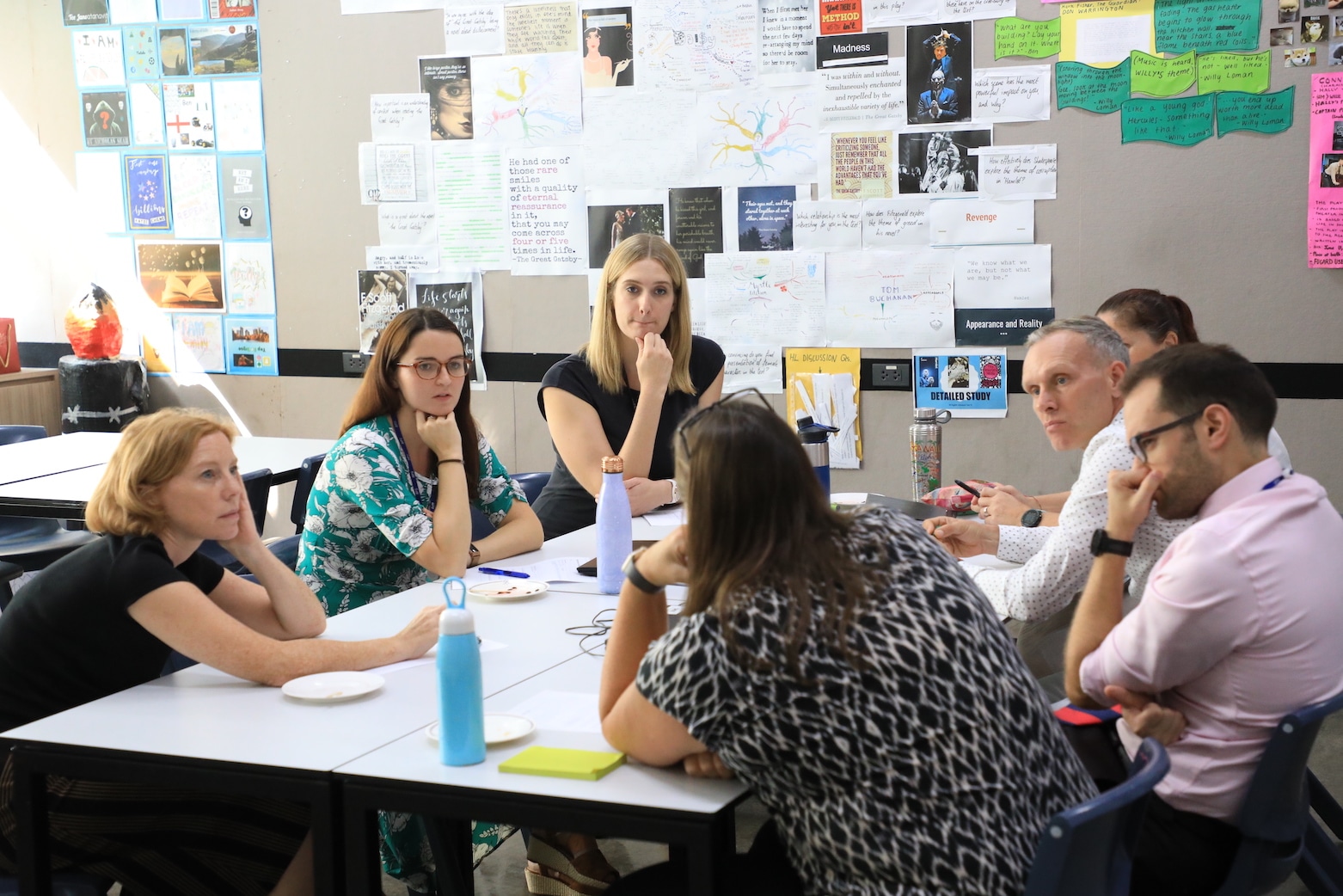
Flipped Learning
Bangkok Patana teachers are using Flipped Learning to foster critical thinking in students.
Here at Bangkok Patana School we are committed to developing our students to achieve their full potential as independent, motivated and engaged learners. Our staff make this possible through continuously striving to enhance their own professional learning; working collaboratively to develop and practise a diverse range of learning and teaching strategies. One such pedagogical approach is that of Flipped Learning, a model which enables students to foster their critical thinking and collaborative skills.
What is Flipped Learning?
Flipped Learning is a learner centred model, which ‘flips’ the more traditional idea of a teacher telling the students what they need to know, or providing them with information. It involves students being more active in their learning. Typically, they are given materials and tasks prior to a lesson and asked to work through these independently as Home Learning. This may involve students reading materials or watching clips or tutorials outside of class. Students are encouraged and challenged to discover key concepts, or broaden their knowledge, of a particular topic themselves, facilitated by the materials or guidance from their teacher. The concept of Flipped Learning goes back to the 1990s, but the phrase came into more popular use in the mid-2000s following the work of two Science teachers, Jonathan Bergmann and Aaron Sams.
“Flipped Learning provides students with predictable, manageable, achievable and valuable Home Learning, leading to lessons which are immediately engaging and challenging,” said John Burrell, Secondary School Biology teacher.

Flipped Learning in Action
Recently, there has been a renewed focus on this approach due to the positive effects it has on Home Learning routines and in supporting greater progress and challenge during lessons. Across the Secondary School Flipped Learning is being used in a range of subject areas to provide dynamic, engaging learning opportunities for our students. Teachers are looking at a variety of ways to deliver Flipped Learning, including asking students to look at pre-lesson content and using technology such as screencasts and videos – which also allows students to pause, rewind and repeat at their own pace.
“For me, Flipped Learning is about maximising the face-to-face time I have with my students. By asking them to carry out learning that requires lower-order thinking skills before the lesson, it means we can move on to the more challenging, higher-order thinking skills when we are together in class. This leads to more insightful discussions, a wider range of critical, inquisitive questions, and it essentially accelerates the learning in a supportive environment,” said Lindsay Tyrrell, English teacher.
Recently I had the pleasure of visiting a Drama lesson where the students had been set the Home Learning task to remember and practise a monologue. This meant that during the lesson students were able to begin performing almost instantly. Instead of having to spend time learning the lines in class, I saw a whole room of students burst into a performance of energetic and dynamic monologues. This maximised the time available in class for students to develop and refine the vital performance skills required for their assessment and allowed the teacher to spend more time providing individual formative feedback.
Student Reflections

In another area of the school, students in Mathematics were required to watch a video for Home Learning, which provided an important opportunity for them to gain the knowledge and understanding of key formulae required for the following lesson. As a school community, we promote students as reflective learners – they are encouraged to consider, reflect upon and analyse both their learning and learning methods applied. As such, students were asked what they thought of the Flipped Learning model following this lesson.
“After watching the video I understood the methods and felt confident applying some of the formula, but still had questions about some aspects of the methods. By completing the ‘consolidation task’ I felt more confident completing harder questions at a later point in the lesson,” said Zi Leong (Victor) Chong, 9L.
“I think watching the video at home helped me, as in the lesson I could use the formula to refresh my memory and use it more confidently. I completed the starter task that tested my understanding before going straight on to problem solving style questions,” said Unsaya (Pearl) Chamsawang, 9S.
Staff Reflections

Last academic year, a number of staff, through a variety of opportunities, explored ways to develop their own knowledge and expertise of Flipped Learning. This included a cross-faculty Home Learning party, Career Professional Learning sessions and the Secondary School Teacher Learning Communities. A number of staff have provided their reflections.
“I creatively flipped the teaching of Twelfth Night, a lengthy Shakespeare play, asking students to research the plot and characters before producing their own plot summary in a format of their choosing. The results were fantastic and included videos, Twitter feeds from the characters, storybooks and a flip book. More importantly, the students were really enthusiastic about the task and clearly relished the opportunity to show off their talents and skills,” said Hannah Davis, English teacher.
“I really enjoy the lessons following a Flipped Home Learning task. There is no need to introduce the basic concepts, so we can jump straight into more challenging tasks,” said Sam Mooring, Mathematics teacher.
This year we will continue to develop our understanding and application of Flipped Learning and continually review the impact that it is having on our students’ progress and attainment. I look forward to sharing further outcomes with you later in the year.
To find out how your child can benefit from our innovative learning please contact us here
Further reading: flippedlearning.org
Contributors (if not quoted); Laura Glanowski, Drama. Madeleine McDonagh, Mathematics.






